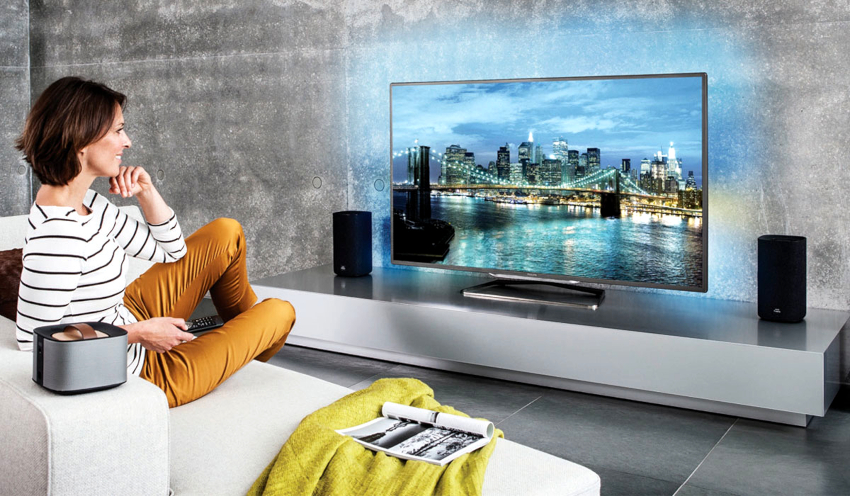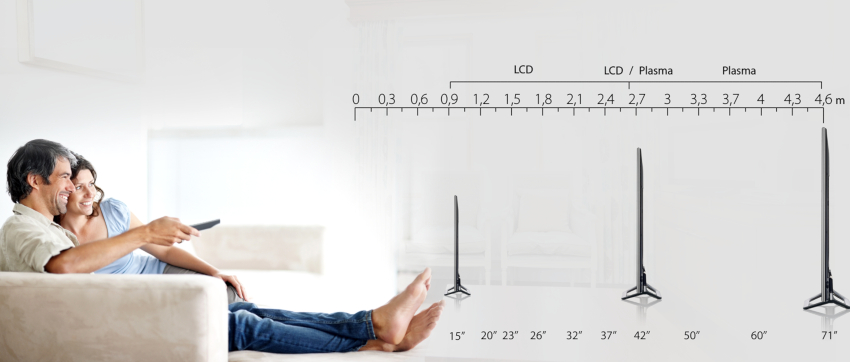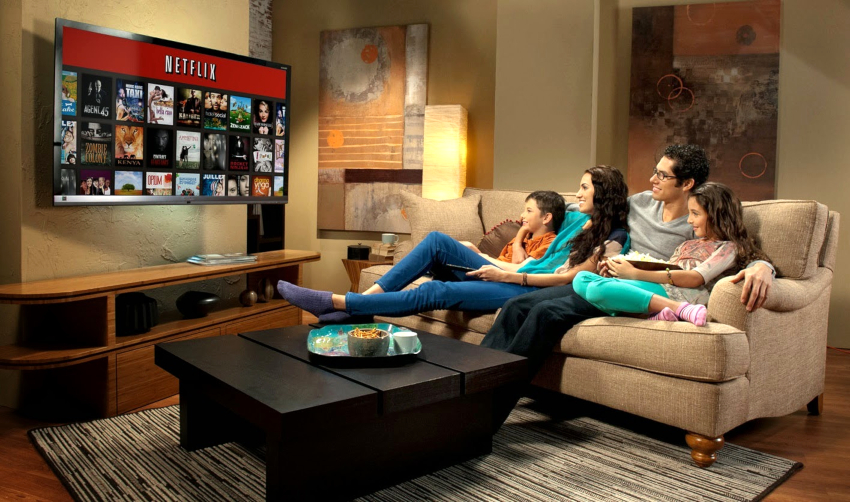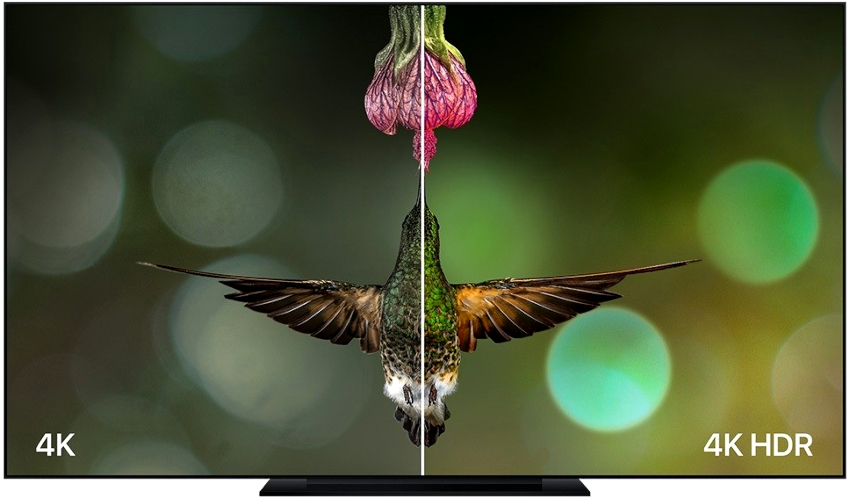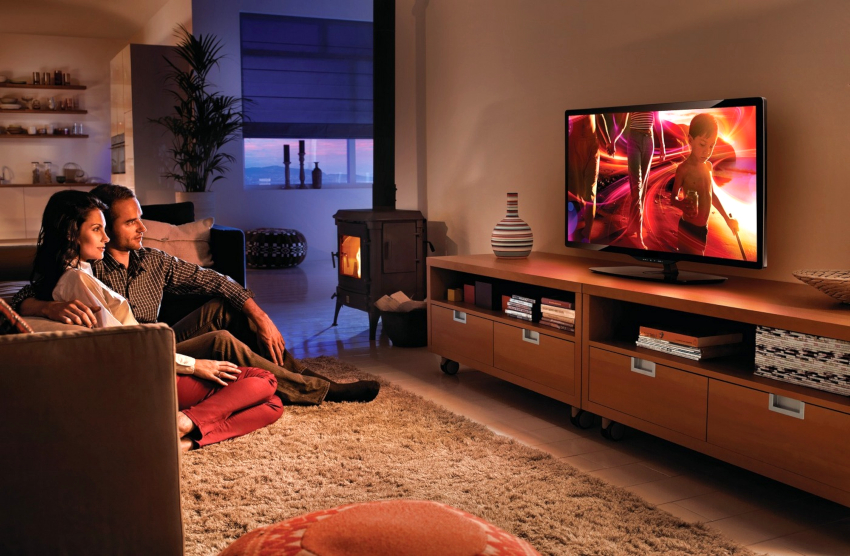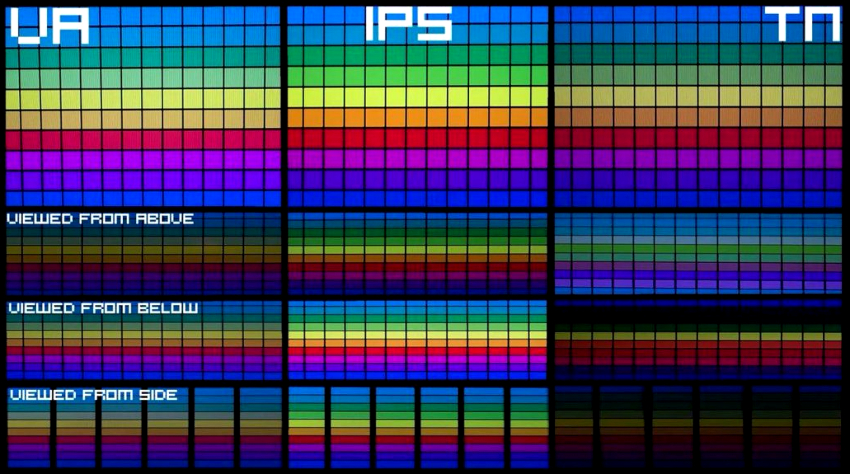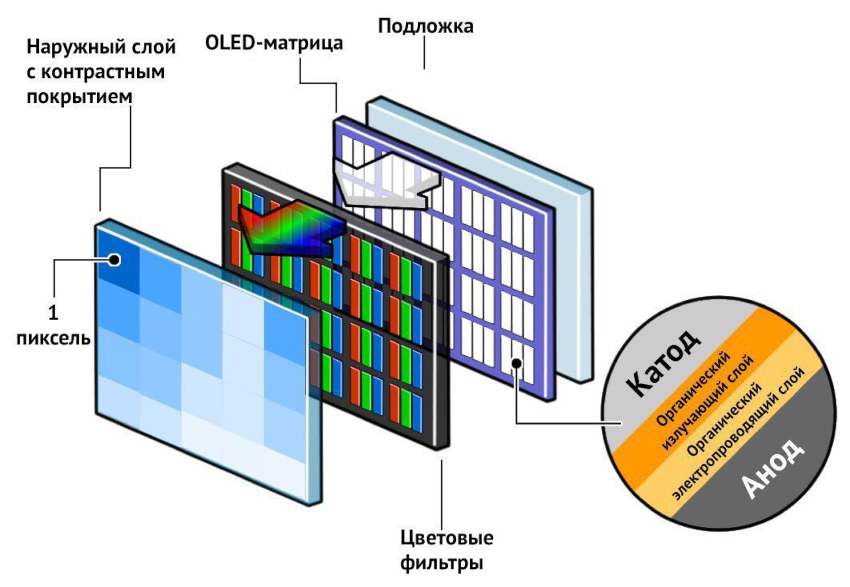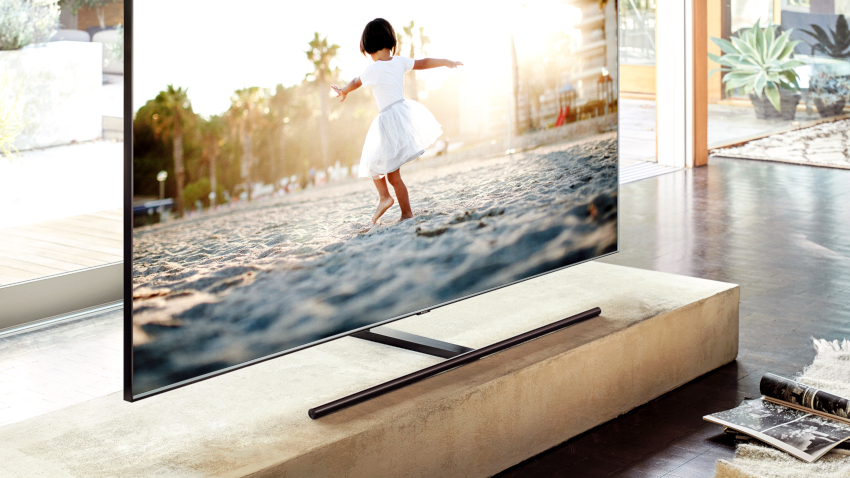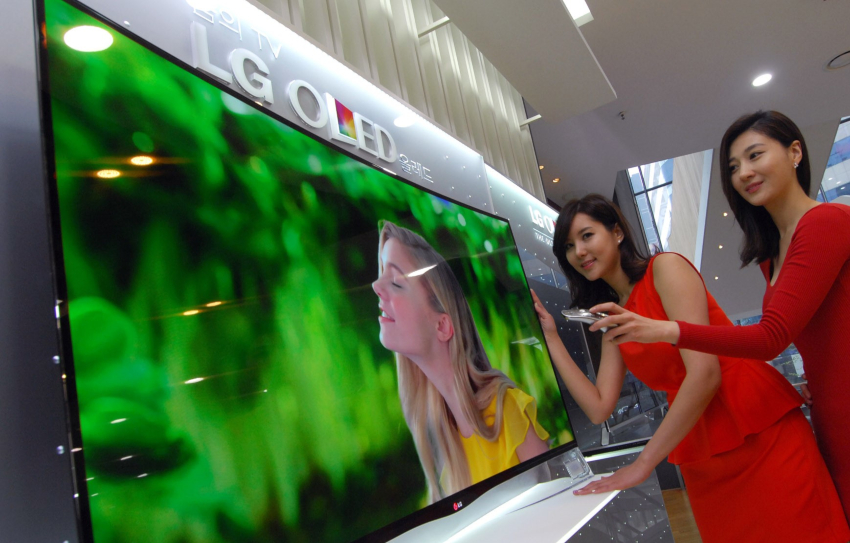TV has long ceased to be a luxury or some kind of unattainable item. Huge home theaters not everyone can afford, but the installation of an ordinary small electrical appliance is available to everyone today. Before choosing TVs, you need to look at what shopping centers offer, and clearly understand for what purpose the device is being purchased. Therefore, how and where the device will be used depends on the set of functions that affect the price.

Before as start choosing a TV, you need to decide for what purpose it is purchased
Content [Hide]
- 1 How to choose a TV for your home: what you need to pay attention to
- 2 The main types of screens are LCD, plasma and LED. What is it
- 3 Projection and laser options: important screen parameters
- 4 How to choose TVs with the optimal diagonal: size depending on the area of the room
- 5 Types of TV matrices: main advantages and disadvantages
- 6 What are LED TVs, other types of backlights
- 7 Advantages of Smart TVs with Internet
- 8 TVs with Wi-Fi and other useful features
- 9 How to tune channels on your TV: what is needed for this
How to choose a TV for your home: what you need to pay attention to
Large competition between manufacturers leads to the fact that almost every month TV sets with new features and functions are on sale. Firms are now trying not only to make the screen larger, but also to improve the quality of the transmitted picture, sound and other technical characteristics. Therefore, before choosing a good TV, first of all, experts recommend deciding for what purpose it will be used.
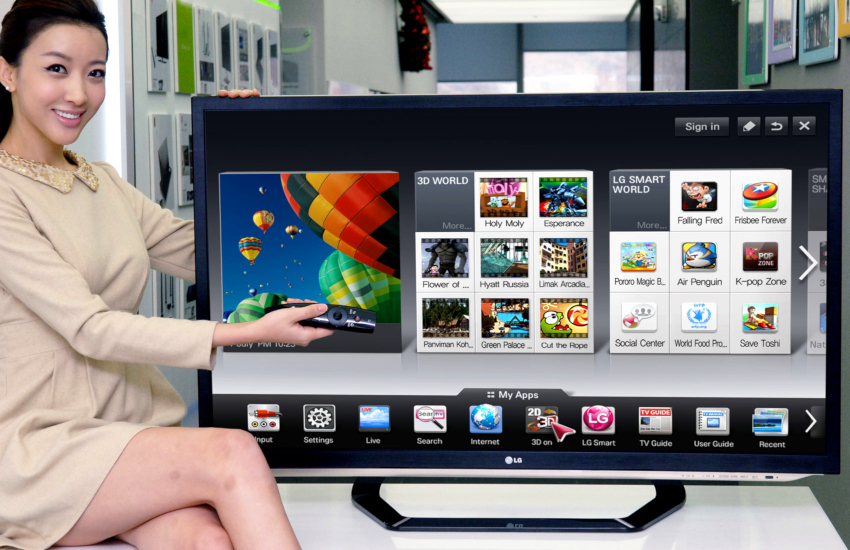
You need to understand that TV set bought for more than one year, so the choice must be made deliberately
If the equipment is purchased exclusively for watching movies, then many functions can be safely abandoned. When the device will be used to a greater extent for games, then it is better not to save money and buy a device with the maximum resolution and the ability to access the Internet.
For many buyers, the determining factor is the price of LCD TVs, because you can either purchase a small model with a standard set of functions for 10 thousand rubles, or give your best when buying a large widescreen screen with maximum capabilities.
It is not considered correct to focus solely on price. Therefore, before buying, you need to determine the financial limit and study all brands of TVs that are in the acceptable price range and their functions.It is important to understand that the device is purchased for more than one year, so the choice must be made deliberately and, in addition to the price, you should pay attention to such important parameters:
- type of screen and backlight;
- size and diagonal;
- resolution;
- picture refresh rate;
- sound transmission quality;
- convenience of the interface;
- additional options;
- operating system.
The main types of screens are LCD, plasma and LED. What is it
The first thing to look for when buying a TV is the type of screen, of which there are a large number on the market. The most old-fashioned option is a CRT TV, which has not only lost its relevance long ago, but is also outdated by several decades. However, despite this, even now in stores you can find such options, because they are distinguished by a low price, simple repairs and a long service life. Significant disadvantages include:
- impressive dimensions of devices;
- minimum number of functions;
- negative impact on vision.
Liquid crystal screens are models that are characterized by low cost, good image quality, small size, and high color rendering. The key disadvantage of this TV version is considered to be a high tendency to burn out under the influence of direct sunlight. If you install the TV near a window overlooking the brightly lit south side, spots may appear on the screen after a while.
LED TVs are among the most advanced because LED TVs, unlike LCD screens, use LED matrix backlighting. This feature affects the size of the equipment and allows you to make TVs even thinner and lighter. The image is of good quality, but the unit absorbs more power.

Liquid crystal screens are characterized by low cost, small size, good picture quality and high color rendering
In a plasma panel, the screen does not consist of crystals, as in an LCD display, but of cells filled with gas, for this reason such TVs are also called gas-cell TVs. The design features provide a good and high-quality displayed image, and the screen is fade-resistant. High energy consumption and frequent overheating of the device are considered negative points of use. And also there are no plasma TVs with a small diagonal, the minimum plasma size is 32 ″. The most budgetary price of a 40 ″ plasma TV is 50 thousand rubles.
Projection and laser options: important screen parameters
About 10 years ago, the so-called laser screens entered the market, which are characterized by a long service life and improved image quality. Thanks to modern energy-saving technologies, the device does not consume much electricity and makes it possible to watch a high-quality picture. The main disadvantage is the high price of the equipment.
Projection TV models are characterized by an optimal price / quality ratio. However, these devices are susceptible to the appearance of dead pixels, which spoil the image quality. Over time, some parts of the screen may fade, affecting color reproduction. Another negative aspect of using a projection screen is the limitation of the viewing angle, which also does not add popularity to TVs.
Regardless of the type of device, the screen can have two coating options:
- Glossy. When light enters, the screen glares and the image is distorted. The picture itself is bright and rich. Some models are additionally equipped with an anti-reflective coating.
- Matt. The coating is not afraid of exposure to direct sunlight, because glare does not appear on it, but the color rendition is not as saturated as in the glossy version.
Recently, in shopping centers you can see curved screens, which until recently were present only in the expensive premium segment, and now are available in budget models. The curved shape of the screen provides a closer arrangement of the edges of the matrix relative to each other, which allows you to narrow the field of view. This feature makes it possible to take the strain off the eyes, because the gaze is focused to a smaller angle. However, this effect can be achieved only by moving the screen as far as possible or by installing a TV with a large diagonal.
How to choose TVs with the optimal diagonal: size depending on the area of the room
The size of the diagonal determines from what distance to watch TV, so as not to unnecessarily strain your eyes. Very often, when choosing equipment, the buyer chases after a large screen size, while forgetting to correlate it with the area and parameters of the room where the device will be installed. Of course, you will be able to surprise guests with a large screen in a small room, but you will not be able to enjoy long viewing, as your eyes will quickly get tired.
Helpful information! When converting inches to centimeters, you need to take into account that 1 inch is 2.54 cm. Therefore, if you need to know the size of the 32 ″ screen, you should multiply this figure by 2.54 - the result is 81.3 cm.
Looking through the characteristics of TVs, you need to know that the first two numbers in the marking indicate exactly the size of the diagonal, that is, we mean the distance between two opposite corners of the monitor. The indicator is measured in inches. It should also be borne in mind that the screen size does not always coincide with the dimensions of the TV, which is usually a little larger due to the additional frame. It should be noted that modern Samsung TV models have such a thin frame that the size of the device practically coincides with the parameters of the screen.

When choosing the size of the TV, you must also take into account that the screen size often does not match the overall dimensions of the device.
When choosing TVs by parameters, you can give preference to an expensive model with a 55 ″ diagonal, but if you place such a screen in a small bedroom, you will not be able to achieve the expected effect. This is due to the fact that the eyes will tire quickly, which can even lead to constant headaches.
Experts recommend using a simple formula when choosing home appliances, which allows you to choose the optimal diagonal size. To do this, you need to multiply the screen size in centimeters by 3 and divide by 100. Thus, for a 40 ″ TV, which means 101.6 in centimeters, the calculation of the optimal distance in meters looks like this: 101.6 x 3/100 = 3.048 m.
From this it follows that the most suitable distance to the TV from eye level should not be less than three meters. The best diagonal size for a TV in the kitchen is considered to be from 19 to 24 inches. It makes no sense to put a large screen here, for the reason that in this room the TV is more often listened to than watched. Therefore, it is better to pay attention to the sound parameters.
For a small bedroom with an area of 15-18 m² optimal TV models are considered to be 28-32 inches in size, which are best viewed from a distance of 2-2.5 m.A large widescreen screen with a diagonal of 40 to 55 inches can also be purchased in a spacious room, but it is important to know at what distance it is better to watch TV to enjoy your viewing experience:
- 32 ″ - 1.2-2 m;
- 40 ″ - 1.5-2.5 m;
- 46 ″ -1.8-3 m;
- 55 ″ - 3-3.4 m;
- 65 ″ - 3-4 m;
- 80 ″ - 3.7-5 m.
Interesting information! The largest TV is manufactured by C Seed. The device has a 4K resolution system and has a diagonal of 262 inches, which is 6.65 m. The price of the model is 540 thousand rubles.dollars, and the weight is about 800 kg. The TV first went on sale in the summer of 2017.
Resolution, frequency and format of TVs: prices of electrical appliances
The technical characteristics of flat-panel TVs must always be considered, because exactly they affect the image quality. Among the key parameters, the resolution of TVs should be highlighted. This characteristic is an indicator that determines the number of functional points per unit of screen area.
In other words, this is the size of the image in pixels, which determines the clarity of the transmitted image on the screen. It is important to consider the number of points both horizontally and vertically.
The main types of expansion and key characteristics are presented in the table:
| Format | Number of pixels | Description |
| HD | 1280x720
1366x768 |
The main resolution type found on most LG or Samsung TVs. This is sufficient for a small kitchen appliance or bedroom TV. Prices start from 5-6 thousand rubles. |
| Full HD | 1920x1080 | The most common option on medium TVs is up to 32 ″. The main advantages of Full HD TVs are affordable price, good picture quality. Prices - from 5 to 30 thousand rubles. |
| Ultra HD or 4K | 4096x2160
3840x2160 |
This expansion is mainly available on TVs larger than 32 ". They are characterized by excellent picture quality, but a high price for a TV - from 50 thousand rubles. |
| Ultra HD or 8K | 7680x4320 | Ultra-modern screens, which so far do not make sense to purchase in our country, because there are no programs or channels that transmit images in such an extension. They differ in a small selection of options, a high price - from 250 thousand to 1 million rubles. and more |
When choosing a TV with a certain resolution, you need to focus not only on the price, but also on the purpose for which the equipment is purchased. If you only need a TV for watching analogue or cable broadcasts, there is no point in buying an expensive TV with the maximum resolution. High resolutions Ultra HD (4K and 8K) are needed only if you plan to watch movies with high image quality or connect a game console to equipment.
The TV format directly comes from the resolution, but in most cases the device has a widescreen 16: 9 screen. This indicator is considered the most popular, because most channels, downloaded films and programs support it.
Based on the research conducted by scientists, it is the 16: 9 ratio that is the most optimal for human perception. If you look at the TV reviews, it will become clear that other formats, such as 21: 9 and 16:10, are quite popular, but it should be noted that such characteristics are inherent only diagonal screens over 55 ″.
Frequency, brightness, contrast of the TV: which is better to choose technical characteristics
The refresh rate indicates how many frames per second can appear on the screen. The indicator is measured in Hertz (Hz). The most common is considered to be a refresh rate of 60 Hz, which is sufficient for comfortable viewing of most films. If you ask the question, what is the difference between a monitor and a TV, then you can understand that it will be about this indicator, because for dynamic modern games, 60 Hz is no longer enough, and this indicator rises to 144 or even 240 Hz, which allows you to completely plunge into the virtual world.
Sometimes the refresh rate is confused with the response rate, which is measured in milliseconds and refers to the rate at which liquid crystals move from horizontal to vertical.According to reviews, TVs with a response time of more than 8 milliseconds in the case of viewing scenes with fast moving objects freeze, and the edges of the picture become blurry.
It is interesting! The faster the screen responds to changes, the better the image quality when viewing dynamic scenes. However, not everyone will be able to perceive such changes on the screen.
When buying, you should pay attention to such a nuance as contrast, because in the product description there are such abbreviations:
- HDR. Indicates a high level of contrast between light and dark shades, as well as between brighter colors on the screen: red, blue, green. This indicator provides the image with maximum realism.
- HDR10. Supports 10-bit shade depth, which makes the picture more vivid and vivid. This characteristic is inherent in devices with an expansion greater than 4K.
A separate group can be divided into TVs capable of transmitting a three-dimensional 3D image. Do not forget that in this case, as when watching movies in the cinema, you will have to use special glasses. If you read reviews about TVs, then you can notice that this function did not gain wide popularity and gradually faded into the background, not only due to insufficient image quality, but also due to the lack of a large selection of 3D content.
Related article:
How to hang a TV on the wall: tips for proper installation
Choosing the best place, height and location. Which bracket to give preference to. Advantages of wall mounting.
If you want to buy a large TV, you need to pay attention to the sound quality. There is not enough room in the cabinet of a small TV to build a good speaker system, which cannot be said for widescreen screens. When sound is a defining characteristic, you need to pay attention to the presence of options such as:
- built-in subwoofer;
- stereo speakers with a power of at least 20 W;
- sound system Dolby Digital.
Types of TV matrices: main advantages and disadvantages
The matrix is considered the main element of a multimedia device, which directly affects the quality of the transmitted picture. Depending on the type of TV matrix, the image on the screen differs in some peculiarities. It is not always possible to see the difference with the naked eye, sometimes it requires looking at the display under different lighting and from different angles.
The peculiarities of the arrangement of liquid crystals, their combination and the way of movement determine the presence of an anti-reflective coating and the ability to watch TV without distortion, regardless of the viewing angle. The service life of the product also depends on the quality of the matrix. There are the following main types of matrices:
- LCD, the so-called Liquid Crystal Display, they are also LCD monitors, which due to their low price and economical power consumption have almost completely replaced plasma screens.
- LED, or Light Emitting Diode. Led TV - this means that the device uses a certain type of screen backlight.
- Plasma. It differs in a fundamentally different technology, when a gas is used in the production of a screen, which refracts and emits light when a current passes.
The main element of the Liquid Crystal Display matrix is a liquid crystal, which, under the action of an electric current, is able to change the position of molecules in the space of the screen. The liquid crystal matrix in TVs consists of the following components:
- interlayers of liquid crystals;
- a layer of transparent electrodes located on the sides of the crystals. This layer controls the crystals that transmit light;
- a color filter that controls the color of dots or pixels;
- screen backlight located on the back of the TV matrix;
- external glass or special film used to cover the front of the screen.
The principle of operation of LCD TVs is the action of crystals through which current flows from the electrodes, as a result of which there is a change in the molecular structure of the crystalline substance. As a result, the light passing through this layer is refracted and hits the filter, as a result of which a point of the desired shade is obtained on the screen.
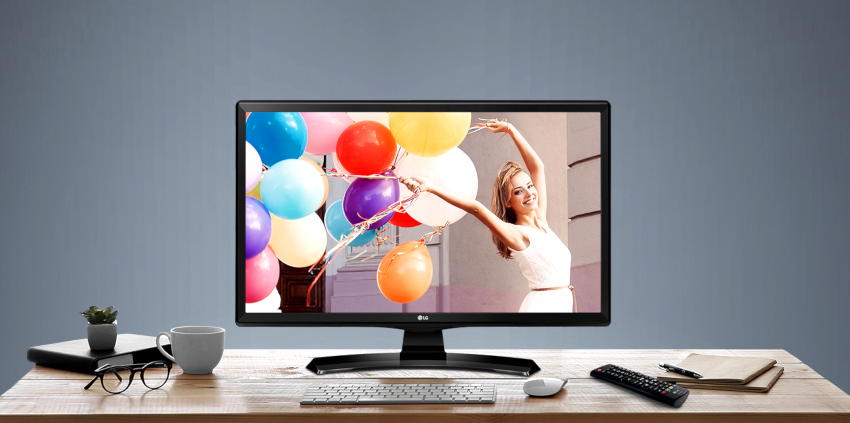
LCD monitors have almost completely replaced plasma screens due to their low price and economical power consumption
The TN matrix was first used in LCD TVs. Due to the ease of operation, the price of a plasma TV with such a matrix is the most affordable, even if we are talking about a device with a large diagonal. For this reason, the devices are very popular among buyers. This type of matrix consists of liquid crystals arranged perpendicular to each other in the form of a spiral. The uneven rotation of particles leads to distortion when viewing the image from different angles. This point is considered the biggest drawback.
It is interesting! TVs with a TN matrix do not always reproduce colors correctly, and sometimes dead pixels appear on the screen, unable to provide a high-quality image. Many companies add Film coating to improve the viewing angle.
Other types of matrices used in modern televisions
IPS technology is considered the older brother of the TN matrix, in which its main shortcomings have been corrected, resulting in the emergence of better technology. In this type of matrix, all the liquid crystals are located in the same plane parallel to the screen, which allows the elements to rotate simultaneously. The main advantages of using IPS technology include:
- increased viewing angle;
- getting a clearer picture and a high level of contrast;
- deep and correct color rendering;
- increased service life;
- reduction of harmful effects on the organs of vision.
The disadvantages include the high price of TVs, as well as the slow response speed that can be observed in some models. Some users also note the lack of black color transmission. The PLS matrix differs in a similar principle of operation, which is characterized by high light transmittance and more economical power consumption, but such TVs have a low level of brightness. The most expensive are TVs with AH-IPS and P-IPS systems, because they are distinguished by a higher quality of the transmitted picture. The cheapest matrixes include E-IPS.
The average version of TN and IPS is considered to be the VA system, which is used in most modern TV models. In this case, the liquid crystals are in a perpendicular position relative to the plane of the screen, which allows you to get more saturated black tones that are not obtained in other matrices. Crystals in the VA system move freely and provide a high-quality image when changing viewing angles without distorting hues. This type of matrix is constantly being improved and supplemented, the latest developments include MVA and PVA.
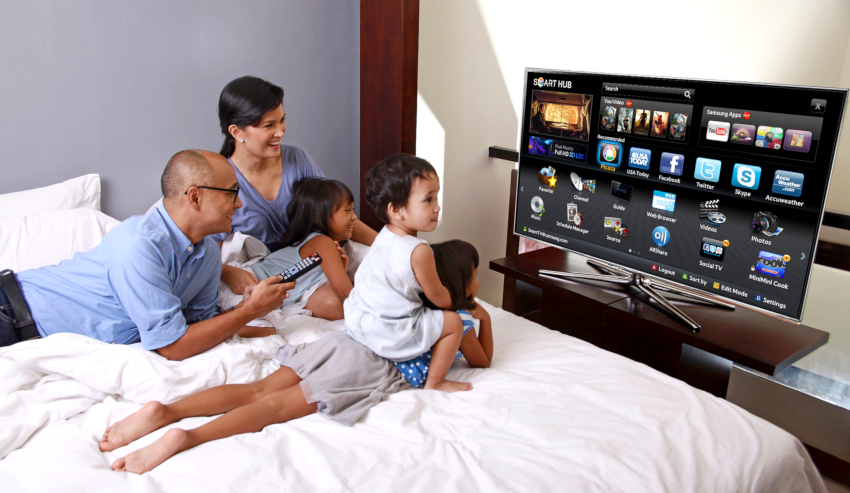
Among the disadvantages of IPS matrices, there is a low response speed and a rather high price for TVs.
What are LED TVs, other types of backlights
The type of backlight also affects the total cost of the TV and the quality of the resulting image. Below we will consider what LED TVs mean, as well as their main options.
Modern technology that provides a good viewing angle is equipped with an Edge LED system, where the LEDs are located along the contour and create the effect of a luminous frame. The technology allows for the production of thin, light and economical devices.
The Direct LED technology is considered to be improved, when the diodes are already dispersed over the entire plane of the screen. Due to the autonomous operation of each diode, local dimming is regulated, which makes it possible to obtain a fairly bright and contrasting picture. Televisions equipped with such a system make it possible to enjoy more colorful images.
The lack of a backlight unit is observed in TVs with the QLED system. In this case, quantum dots are used, which play the role of illumination. Such TVs most correctly reproduce colors, and are also very easily perceived by the human eye. The price of LED TVs is slightly higher than the cost of other models, but this does not affect their popularity.
The latest development is considered to be OLED technology, where instead of a backlighting unit, diodes are used, covered with a substance - a phosphor, which begins to glow when an electrical pulse passes through it. Televisions have the largest viewing angle, and when watching programs on such a screen, the eyes will not quickly get tired. The disadvantage of the technique is the high price.
LG vs Samsung: which TV is better depending on the type of backlight
The QLED system was first used in Samsung LED TVs, so matrices of this type are found only at the South Korean manufacturer. Despite the fact that OLED technology was created by engineers at LG, it can be found in other manufacturers as well.
In 2018, Samsung's flagship, the white QLED Q9FN TV, went on sale, which immediately competed with the LG OLED65E8 device released the same year. The main difference between LG and Samsung is considered to be not such a clear reproduction of black colors. However, when displaying a mixed picture with black and bright tones on a Samsung TV, the dark areas dominate and slightly obscure the bright colors, which is not the case with an LG appliance. Unlike OLED TV, QLED TV, thanks to the presence of anti-reflective coating, better maintains contrast in bright light.
The advantage of LG TV is considered to be high contrast when displaying dark scenes, because elementary pixels of dark tones can be turned off and do not disturb the brightness of neighboring dots.
Interesting information! When purchasing an LG or Samsung TV, you will need to choose between LG's more active medium brightness and Samsung's high dynamic range.
When it comes to image clarity, you can argue that the QLED Q9FN has gone a bit ahead of the curve thanks to its detailed 4K resolution. Although LG OLED gives a more detailed close-up display, in the case of large-scale scenes, the image is significantly inferior to the competitor. Another advantage of the Samsung white TV is better color rendering.
Many users have noted that the LG TV screen can distort color when the picture is bright and, for example, show cyan tones instead of rich blue. In general, both models have both advantages and disadvantages, therefore, when choosing, you should focus on personal preferences and trust in a particular brand.
Advantages of Smart TVs with Internet
When buying a TV with Internet access, you can forever get rid of the need to wait for your favorite programs, football broadcasts, because there are always resources on the network for watching films, clips and TV series. Smart TV capabilities can amaze any user. Having such a TV, you can easily stop watching a movie and be distracted by other things. You can go to social networks without getting out of bed and chat with friends. Convenient arrangement of widgets on the screen allows you to quickly find the desired site and go to view it.
When choosing the best TV with a Smart system, you need to familiarize yourself not only with the interface, but also with the technical capabilities. For example, LG TVs have TV channel icons on the screen. Samsung displays social networks in one Social TV folder. Panasonic's SHOUTcast catalog lets you listen to your favorite radio stations. The number of widgets can be increased by downloading them on the official sites: some of them are paid, and on some you can download them for free.
Another useful feature of Smart TV is the SimplyShare option, which allows you to link your TV to any device that supports a wireless Wi-Fi network. This function provides a quick connection to a computer or phone, when you can display the necessary photos or videos on the big screen.

The advantages of Smart TVs there is a lot of internet, one of them is the ability to go to social networks and chat with friends
The Control function makes it possible to control the TV not only with the remote control, but also using a smartphone, tablet or computer. The USB-Recording option is considered useful, which allows you to pause the program while watching digital channels live and watch it after a while.
It is interesting! We can say that a TV with the Internet has a lot of advantages over simple models.
TVs with Wi-Fi and other useful features
Modern technology is filled with a large number of functions that simplify life, and televisions have not spared this statement. Today, even a TV with Wi-Fi that allows you to use the Internet without being distracted from the screen is already difficult to surprise. The main advantage of TVs with WiFi is that there is no need for additional cables to connect to the Internet, which are required with only a LAN connector. Other popular features of these TVs include:
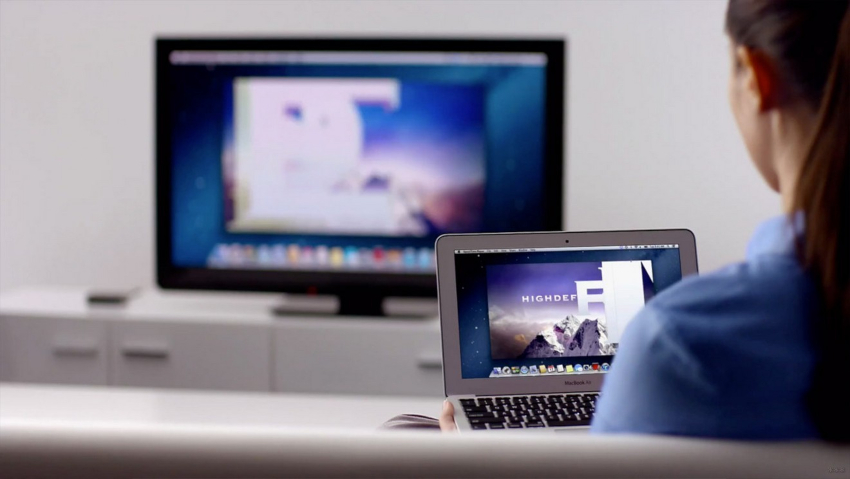
The advantage of TVs with Wi-Fi is the absence of cables for connecting to the Internet and connecting with other devices.
- Anti-reflective coating. Allows you to get a normal image under strong lighting conditions. This function is especially relevant for bright rooms.
- Picture-in-picture. An option that many could only dream about before, makes it possible to simultaneously watch several channels.
- Ability to use a memory card. The presence of a slot allows you to use an SD card from a phone or other recording device to view photos or videos.
- 24p True Cinema. The function provides the TV with the ability to transmit the picture at the frequency with which it was captured - 24 frames per second, so that you can relieve eye strain.
- TimeShift system. Available only on Smart TV and allows you to pause a program that is being broadcast live.
- Control by voice or gesture. Thanks to this function, there is no need to constantly search for the remote control.
- List of favorite programs. By adding only what you need to your favorites, you don't have to flip through a large number of TV channels.
- Progressive scan. A technology that allows you to add clarity and better quality to an image by consistently feeding frames.

A very useful function - "List of favorite programs", having compiled which, you do not have to flip through a large number of channels
How to tune channels on your TV: what is needed for this
Those who purchase a TV primarily for viewing streaming TV should be aware of which built-in tuners should be present in the technology. If modern models have almost all the necessary functions, then in budget versions only one or several tuners may be available. To tune your TV to certain channels, you need to know the following basic types of tuners:
- DVB-T.This option refers to terrestrial digital broadcasting standards capable of transmitting a high quality signal, but not receiving more than 10 channels.
- DVB-T2. A more advanced model that “catches” 32 channels. The video is of excellent quality, and the device itself has a stable connection with the repeater.
- DVB-C. A standard that allows you to watch cable TV in digital format and in good quality.
- DVB-S and DVB-S2. The latest models used for broadcasting satellite channels. Unlike all other devices, they make it possible to watch channels in the best HD quality, which is especially important if a good high-resolution TV is installed.
After connecting the antenna, to select all available channels, you must turn on automatic tuning or perform a manual search.
In shopping centers, there is a large selection of various models of TVs from different manufacturers, which differ not only in price, but also in functional content. You should start your choice by determining the optimal size of the diagonal, depending on the area of the room, and then you can begin to consider other important characteristics. Before buying the selected model, you first need to read real reviews, which sometimes provide more information than sales consultants.

